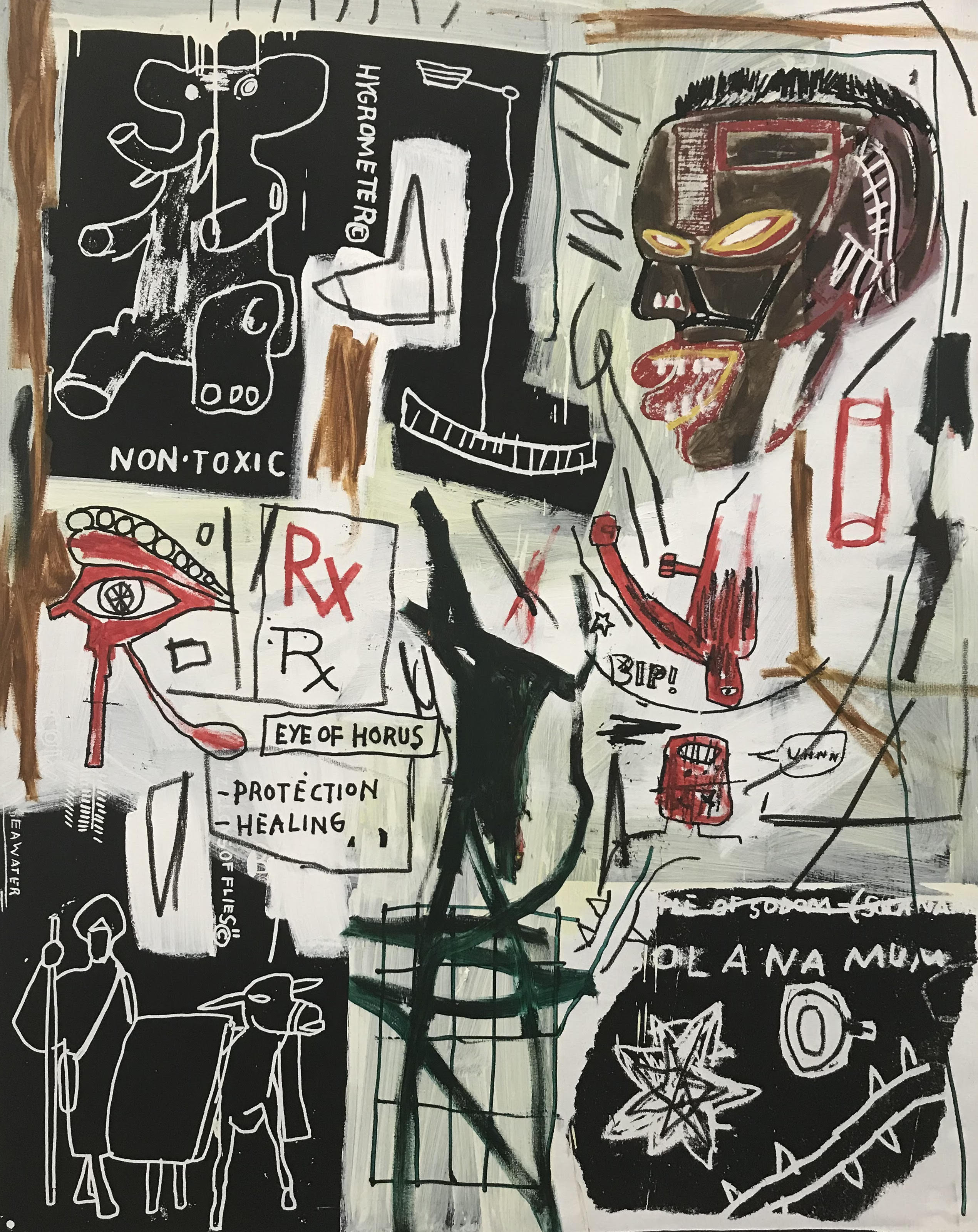
Jean-Michel Basquiat had a short but impactful life as an artist. Raised in Brooklyn by parents of Haitian and Puerto Rican decent, his youth was chaotic and filled with challenges. His mother suffered from mental illness, and when he was 13 she was committed to an institution.
Two years later Basquiat left home. As a homeless teenager, Basquiat played in a “noise” band and started tagging buildings on the Lower East Side. His tag SAMO and other unique markings became legendary before he began painting on canvas. However, his large paintings on canvas retain the grit and vibrancy that made him a symbol of the New York City street scene and burgeoning hip-hop culture.
By the 1980s his paintings were being exhibited in museums internationally. The work shown here is entitled Melting Point of Ice and was completed in 1984. Basquiat’s paintings are an expression of his experiences as a person of color as well as a tool to confront issues of systemic racism and class struggle. His rise within the art world occurred at light speed.
Basquiat remains one of a handful of young Black artists to achieve national recognition. His work has been collected by David Bowie, John McEnroe, Madonna, Jay Z and Johnnie Depp, to name a few. Several years after his death, a Japanese businessman paid over $110 million for an untitled work—the most ever spent on an American work of art.
In the best of circumstances, the struggles artists face are enormous. For most, carving out the time and energy, as well as the physical, emotional, and mental space to explore their artistic talent seems insurmountable. It is hard to imagine the strength, intelligence and talent required to rise to such heights at such a young age. I wonder what great art will never be made or seen because of systematic racial injustice. Tragically, Basquiat died in his art studio at age 27 from a heroin overdose.
